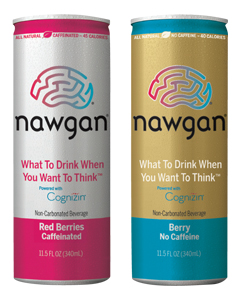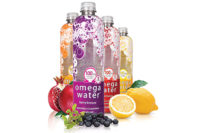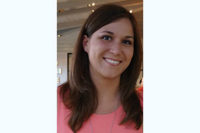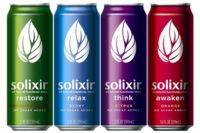
|
|
New packaging designed to better differentiate the non-caffeinated variety from the caffeinated varieties is expected to begin hitting shelves this month. |
Around age 30, adults begin to experience changes in brain function as part of natural development, according to Chesterfield, Mo.-based Nawgan Products LLC. Some effects are mild, such as occasionally misplacing everyday items, but others can be more significant. Although Nawgan functional beverages do not claim to reverse the brain aging process, they were developed specifically to support cognitive function over time, the company says. And when it comes to formulating a functional beverage, it’s not a job just anyone can do.
Robert Paul, Ph.D., co-founder of Nawgan Products LLC, is a board-certified clinical neuropsychologist specializing in adult brain function. During his career, Paul has written more than 150 professional research papers published in scientific journals and books, received multiple awards for his research and worked as a consultant for pharmaceutical and biotechnology companies that are working to develop new medicines to improve brain function. Paul decided to take matters into his own hands in 2006 when he began developing a functional beverage called Nawgan. The product started appearing on retail shelves in St. Louis last year.
“The concept behind the beverage is to really provide ingredients that are important for key mechanisms of how the brain is working, particularly for adults,” Paul says. “This is based off science literature and my research background, in terms of the work that my lab is funded to do regarding brain aging.”
Available in caffeinated Red Berries and Tarocco Orange flavors and a non-caffeinated Berry flavor, Nawgan beverages contain a mix of natural ingredients that help with focus and alertness. Each ingredient was selectively chosen based on a combination of mechanisms that research has shown are important for how the brain functions, Paul says.
Each product contains four to five main ingredients, depending on the variety, to support cognitive function: lycopene, D-alpha tocopherol acetate, alpha-glyceryl phosphoryl choline, citicoline and caffeine. Lycopene, a compound in the carotenoid family, acts as a coloring, anti-inflammatory and antioxidant. D-alpha tocopherol acetate also is an antioxidant and functions as natural vitamin E. The company says natural vitamin E is more active and available than synthetic vitamin E, making a subtle, but important, difference. It also calls attention to the correlation between acetylcholine and memory function.
The presence of alpha-glyceryl phosphoryl choline in the beverage causes an increase in acetylcholine, which otherwise would decline with age, the company says.
Numerous research articles and studies have linked citicoline with stroke management because it is able to significantly increase brain metabolites among healthy adults, the company reports. The last ingredient, caffeine, might come as a surprise to some. While caffeine is associated with energy, it also is linked to increased attention, memory and alertness. Studies also have shown that caffeine is good for the long-term health of the brain because of its ability to protect the brain after an injury, the company says. Nawgan’s caffeinated variety contains 100 mg. of caffeine, which is just less than the amount of caffeine found in a cup of coffee.
When Paul first decided to move forward with his functional idea, he made the conscious decision not to incorporate the medically relevant ingredients and health benefits into pill form.
“If you look at adults, particularly older adults, they might already be taking a lot of different supplements, pills or vitamins,” Paul explains. “They’re already taking a lot of things in that format and if you can create a beverage form that provides all of those nutrients and does so in a refreshing way, then that’s really an opportunity.”
What’s in the name
“The name is a double entendre,” Paul says. “It’s a reference to noggin, which is a historical reference to the brain, but it’s also an amalgamation of my two sons’ first names, Dawson and Logan.”
The logo is in the form of a brain to make the product’s function obvious, but it also provides a real maze to help maintain higher order thinking skills, Paul says.
Looking forward, the company plans to focus its energy on new and improved flavors.
“Our flavor has actually improved a bit over the last year because earlier on our entire focus was on the science, what was the right ingredient mixture,” Paul says. “We spent the last year evolving the flavor platform so that it was a better experience in terms of use and we’ve gotten to a point where our customers are really happy about that, but we are going to continue to improve there and actually build out the line in such a way that our flavor systems and our serving sizes and all of those evolutions are something that consumers get really excited about.”
After a year of collecting data, making small improvements and perfecting its success in local markets, the brand is on a very strategic platform for growth, Paul says.
“Many people have not heard of our brand. Over the next year, that’s going to change quite a bit and we’re thrilled with that,” he says. BI





